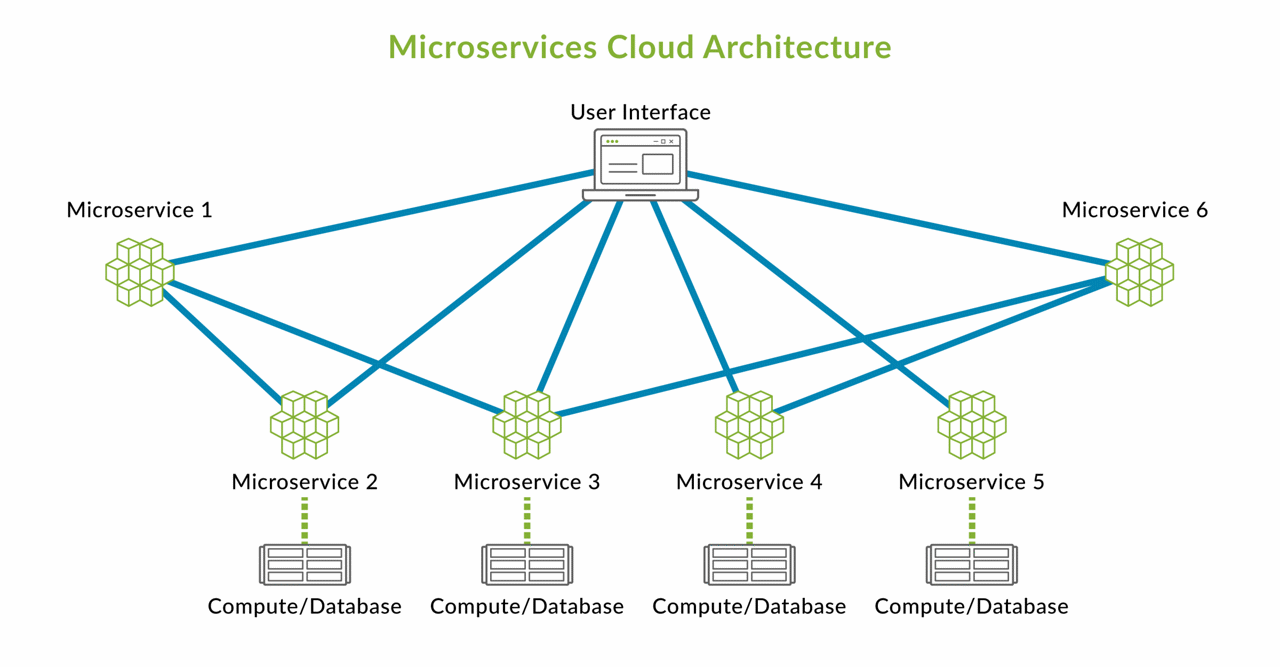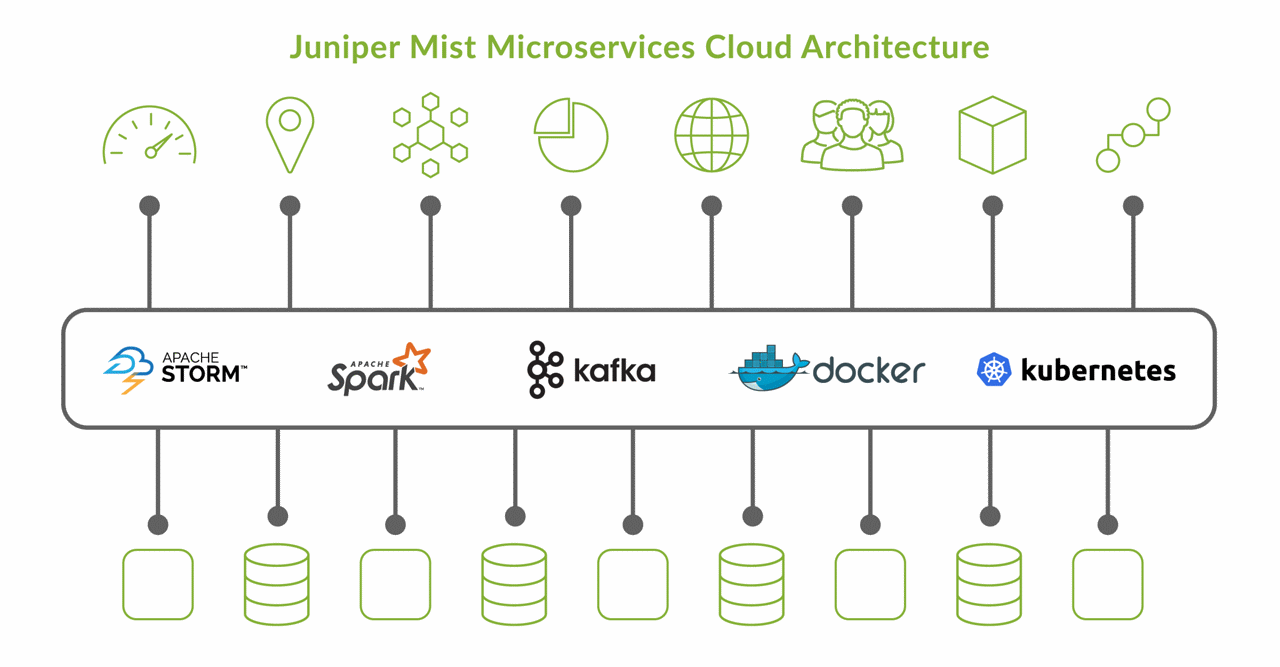What is a cloud microservice?
What is a cloud microservice?
Historically, software has been created using monolithic architectures, but as software complexities grew exponentially, these monolithic codebases were not scalable. Installation and updates required planning and often downtime, with little or no opportunity to choose individual components beyond selecting a few custom settings.
Cloud microservices is an architectural method of developing software applications or functions as a distributed set of independently deployable and manageable modules that run various application services. Each service has a unique function that communicates with others via well-defined application programming interfaces (APIs). This approach to software development allows faster development and scalability of applications than a traditional monolithic approach. Microservices are built as distributed application components, allowing services to work independently yet be deployed, updated, and scaled to support overall application performance needs.
The cloud-based scalability of microservices solutions means the number of running instances of any service is never a problem. And microservices architecture enables faster development, allowing features and innovations to be deployed to market more quickly than legacy applications. For example, updates can happen every week but won’t be noticed by the end user — a sharp contrast to the scheduled release cycles of the past.
What problems do cloud microservices solve?
As applications get larger and more complex, the traditional monolithic approach to building enterprise applications has become problematic and inefficient. Over time, the addition of features creates interdependencies that greatly increase software complexity, leading to longer development and testing cycles and multiplying software bugs. By contrast, in applications built on the modern cloud, complex applications are split into microservices, each of which is designed and managed by a small, focused development team.
Microservices are designed independently of one another using optimized technology stacks chosen specifically for that service. Adding or removing features is simpler, bugs are fixed in near real time, and updates are deployed independently without disrupting the overall application. Additionally, in a microservices architecture, applications are inherently resilient — the failure of one service does not impact the others.
Compared to traditional monolithic structures, a microservices architecture has several advantages, including:
- Flexibility: Services are designed independently of one another, reducing issues and complexity
- Scalability: Services scale up or down elastically when they’re needed without requiring expensive hardware
- Resiliency and programmability: The failure of one service does not impact others; 100% API programmability allows services to communicate and handle failures far more gracefully
- Efficiency: Services are designed independently of one another using optimized technology stacks chosen specifically for that service
- Agility and ease of deployment: Adding and upgrading features is simple, and bug fixes and patches are applied in near real time without network disruption
How do cloud microservices work?
Microservices architecture structures an application as a collection of small, loosely coupled and independently deployable services. Each service is designed to perform a specific business capability and can communicate with other services through well-defined APIs.

Microservices cloud architecture diagram
Here's a general overview of how microservices work:
1. Service separation
The application's functionality is broken down into smaller, manageable services based on business capabilities. Each service focuses on a specific task and can be developed, deployed, and scaled independently.
2. Independent development and deployment
Each microservice is developed and deployed as a separate entity, typically using different technologies and programming languages. This allows development teams to work autonomously, choosing the most suitable tools and frameworks for their specific service.
3. API-based communication
Microservices communicate with each other through APIs, using lightweight protocols such as HTTP/REST, messaging queues, or event-driven mechanisms. Services expose well-defined APIs that enable them to send and receive data from other services.
4. Loose coupling
Microservices are loosely coupled, meaning they are independent and can evolve and be updated without impacting other services. Changes made to one service do not require modifying or redeploying the entire application.
5. Independent scalability
Each microservice can be scaled independently based on its specific needs. Services experiencing high demand can be scaled up, while less utilized services can remain at a lower scale, optimizing resource usage.
6. Data management
Microservices can have their own databases, allowing each service to choose the most suitable database technology for its specific requirements. Data consistency and synchronization between services can be managed through techniques like event sourcing or distributed transactions.
7. Resilience and fault isolation
Microservices are designed to be resilient and fault tolerant. If one service fails or experiences issues, it won’t bring down the entire application. Services can handle failures gracefully and continue operating independently.
8. DevOps and continuous delivery
Microservices align well with current development operations (DevOps) practices, enabling frequent deployments and continuous delivery. Since each service is deployed independently, updates and new features can be released quickly without disrupting the entire application.
9. Monitoring and management
Monitoring and managing microservices can be challenging due to the distributed nature of the architecture. Tools and platforms are used to monitor the health, performance, and availability of each service, enabling proactive maintenance and troubleshooting.
By adopting a microservices architecture, organizations can achieve benefits such as improved scalability, flexibility, fault isolation, and faster time-to-market for new features. However, this architecture also introduces complexities related to inter-service communication, data consistency, and distributed system management, which need to be carefully addressed and managed.
Juniper implementation
By leveraging a modern cloud architecture with microservices, the Juniper Mist cloud provides an unprecedented elastic scale and service velocity without disruption.
Not all cloud services are designed to deliver an optimized digital experience. Just as enterprises look to mobility and cloud to be nimble, we designed the Juniper Mist cloud around microservices for business agility and scale. The Juniper Mist cloud is the first truly innovative approach to always-on wired/wireless/SD-WAN network operations management in over a decade — combining AI, machine learning, and data science with the latest microservices technologies to deliver a smart, scalable solution that optimizes the user experience.
Key components of the Juniper Mist cloud architecture microservices
Microservices
The Juniper Mist cloud is built on a microservices architecture that brings agility and scale to network management and operations. On-demand network upgrades and patches take minutes instead of months.
AI, machine learning, and data science
The Juniper Mist cloud adapts in real time to changes in user, device, and application behavior for predictable and reliable network operations. It monitors network trends in real time, sends alerts when service levels degrade, and provides recommendations for troubleshooting and/or proactive configuration changes.
Modern cloud elements
Web scale enables the Juniper Mist cloud to collect, analyze, and store real-time metadata from all connected network devices. Containers ensure portability and fault tolerance. Kafka, Storm, Spark, and other elements provide speed, scale, and resiliency, while a global cloud instance provides insight into macro-level trends.

Juniper Mist microservices cloud architecture
Cloud microservices FAQs
What’s driving the adoption of cloud microservices?
The key drivers behind the push towards microservices adoption are IT modernization, digital transformation, and growth and expansion.
Cloud microservices adoption is driven by scalability, agility, fault isolation, cost efficiency, flexibility, and streamlined DevOps. It leverages cloud platforms for resource optimization, faster time-to-market, resilience, and technology diversity. Microservices enable independent scaling and development, while cloud services offer infrastructure, automation, and service management capabilities. Together, they empower organizations to meet changing demands, reduce costs, and deliver applications efficiently in the cloud.
What are the key capabilities of cloud microservices?
Microservices enable innovative software development at the speed of modern business needs. The key capabilities of cloud microservices include:
- Scalability: Independently scale services based on demand, optimizing resource utilization
- Agility: Develop, deploy, and update services independently for faster time-to-market
- Fault isolation: Failures in one service don't impact others, enhancing overall system resilience
- Cost efficiency: Granular resource allocation minimizes overprovisioning, reducing infrastructure costs
- Flexibility: Choose different technologies and frameworks for each service, leveraging the best-fit solutions
- Infrastructure and service management: Utilize cloud services for auto-scaling, load balancing, service discovery, and container orchestration
- Resilience: Leverage the cloud platform's built-in mechanisms for fault tolerance and high availability
- Speed and efficiency: Rapidly deliver new features, respond to market demands, and optimize resource usage
- Technology diversity: Employ diverse tools and programming languages within a single application architecture
How does a microservices cloud-based application differ from a monolithic software application?
A microservices cloud-based application differs from a monolithic software application in significant ways. While a monolithic application is built as a single integrated unit, a microservices application is composed of loosely coupled services that can be developed, deployed, and scaled independently. This allows greater scalability, agility, and fault isolation.
Microservices enable individual services to scale based on demand, optimizing resource utilization and facilitating faster time-to-market. Additionally, microservices offer technology choices, allowing teams to use the most suitable tools for each service. Overall, microservices architecture in the cloud provides more flexibility, resilience, and adaptability than monolithic applications.
What are the key challenges in adopting microservices in a cloud environment?
Adopting microservices in a cloud environment comes with challenges. Inter-service communication and data consistency must be carefully managed in a distributed cloud application system. Service monitoring and management can get more complex due to the increased number of services. Ensuring proper security and access control across multiple services is another challenge.
What are the future trends for microservices in the cloud?
Projected trends for microservices in the cloud include the following:
- The increasing popularity and growing adoption of microservices is expected to continue
- Cloud-native technologies are continually being developed that will make it easier to develop and deploy microservices applications more quickly and reliably
- The microservices ecosystem is growing rapidly, with more new tools, frameworks, and services becoming available for developers to use to accelerate innovations
Mandatory question: What cloud microservices solutions does Juniper offer?
The Juniper Mist cloud is built on a cloud-native, modern microservices cloud architecture that brings the agility of SaaS to network operations, helping organizations further meet their digital transformation goals. The Juniper Mist cloud uses a combination of artificial intelligence, machine learning, and data science techniques to optimize user experiences and simplify operations across the wireless access, wired access, and SD-WAN domains.
Data is ingested from numerous sources, including Juniper Mist Access Points, Switches, Session Smart™ Routers, and Firewalls for end-to-end insight into user experiences. Juniper also leverages Mist AI™ for next-generation customer support. It is the foundational element behind Marvis®, the industry’s first AI-driven virtual network assistant, which provides extensive insight and guidance to IT staff via a natural language conversational interface.


